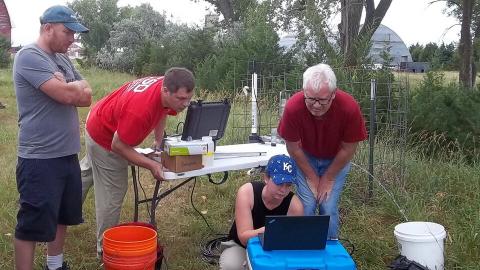Published in Nebraska Today
When it rains, and even when it pours and floods like it did in Nebraska in late 2018 and through much of 2019, the precipitation that hits the surface doesn’t always factor in to recharging the state’s vast and vital groundwater supply.
In fact, the majority of precipitation doesn’t reach those depths. So when does it most often happen? A recent study led by Mikaela Cherry, a doctoral candidate in the University of Nebraska–Lincoln’s School of Natural Resources, found that winter precipitation reloads most of the state’s groundwater supply.
And learning when groundwater is recharging, Cherry said, could reinforce current efforts to limit how much nitrate reaches the supply.
Cherry said that exploring the water quality wasn’t part of the initial plan but turned out to be a key unforeseen benefit. Cherry started her doctoral program two years ago, and her adviser, groundwater hydrologist and DWFI Faculty Fellow Troy Gilmore, told her about a trove of data collected in 2011 by former Husker faculty member and DWFI Global Fellow John Gates, who coordinated with Nebraska’s Natural Resources Districts to gather nearly 800 groundwater samples from across the state that year. DWFI Faculty Fellow Aaron Mittelstet is also a part of the project.
“By understanding what times aquifers are recharging and vulnerable to contamination, we can improve water-quality best-management practices,” Cherry said.

